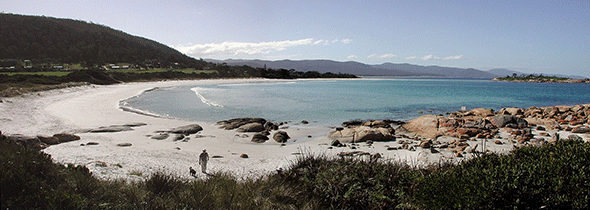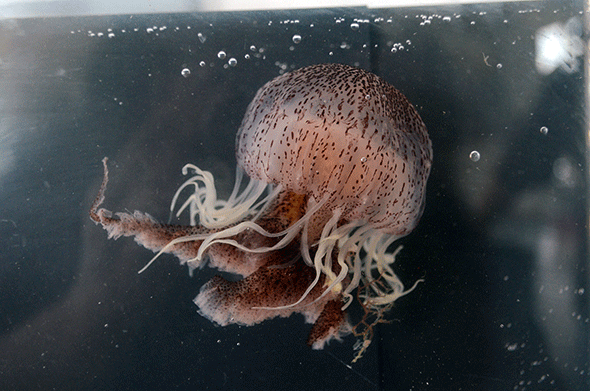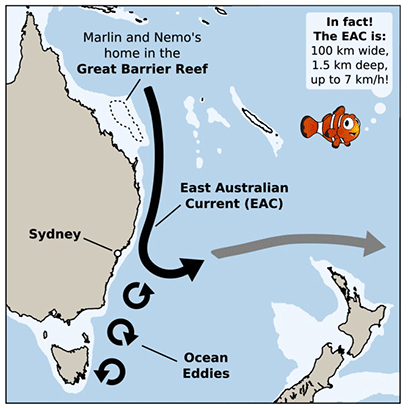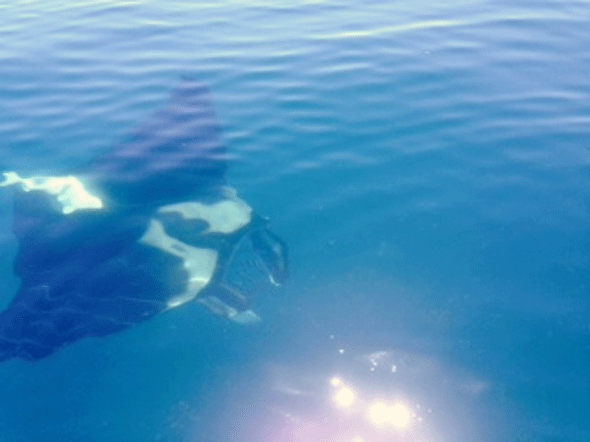
|
Published: 9 July 2012
Nocturnal fish take back the day
On the coral reefs of Tabuaeran Atoll in the west-central Pacific Ocean, nocturnal fish – which sport big eyes for improved night vision – are increasingly venturing out in the day. Could predator loss from fishing be the cause?
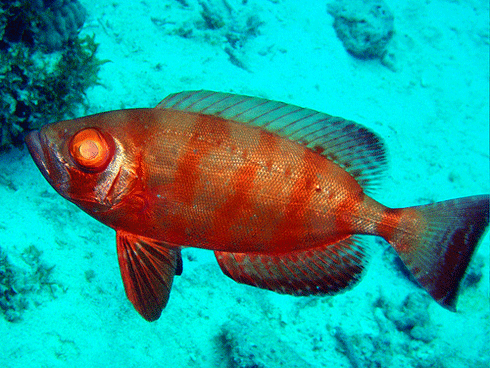
|
|
Large-eyed nocturnal fish, such as this moontail bullseye (Priacanthus hamrur), are highly specialised for operating in the dark. They may have adapted to night living in order to avoid predators active during the day. Credit:
Nemo’s great uncle. Licensed under an Attribution Non-Commercial Share-Alike Creative Commons License
|
According to a study published in PLoS ONE, overfishing has plundered the atoll of many of its notable predators, including sharks and barracudas, causing ripple effects through the ecosystem. One of these emerging changes appears to be that with less fear of being eaten, nocturnal fish are increasingly venturing out during the day.
‘We found that on reefs where daytime active predators had been heavily fished, nocturnal prey fish species were more abundant during the day. This increase in abundance was most pronounced for fish species that had the largest eyes (relative to their body size),’ says lead author Dr Douglas McCauley of the University of California, Berkley.
Given that large-scale fishing did not begin in the Tabuaeran Atoll until the 1980s, Dr McCauley and his colleagues were surprised that this behaviour change has taken hold in only 30 years.
‘This is a very short amount of time relative to [the] long evolutionary time that it takes for these nocturnal/diurnal divisions to originally set up,’ says Dr McCauley.
Dr McCauley and his co-authors suspected that the behavioral changes at Tabuaeran were due to the precipitous decline in predators, but in order to put that theory to the test they studied nocturnal fish behaviour on the reefs of Palmyra Atoll north of Tabuaeran. Palmyra is a protected and remote atoll where marine predators remain naturally abundant. The scientists found that with so many daytime predators, nocturnal fish on Palmyran reefs still stuck closely to the dark.
‘The patterns by which animals divide up time on reefs (and other ecosystems for that matter) are believed to be relatively static. If these divisions start to break down it could have some very important ecological consequences,’ says Dr McCauley.
‘On our study reefs, for example, if these nocturnal fish that are becoming more abundant are feeding actively during the day, they may well put significant competitive pressure on diurnal [active during the day] fish that feed on the same food resources that they do.’
While this study is not the first time scientists have recorded animals switching nocturnal habits for diurnal, it is noteworthy because it is the first record of an entire group of night-adapted animals, as opposed to a single species, making such a shift.
‘We have learned a lot about how environmental change affects how animals use space and resources – but not yet enough about how they use time,’ says Dr McCauley.
Source: adapted from the Mongabay story ‘“Time pollution”: loss of predators pushes nocturnal fish to take advantage of the day’, by Jeremy Hance, published 25 June 2012.


